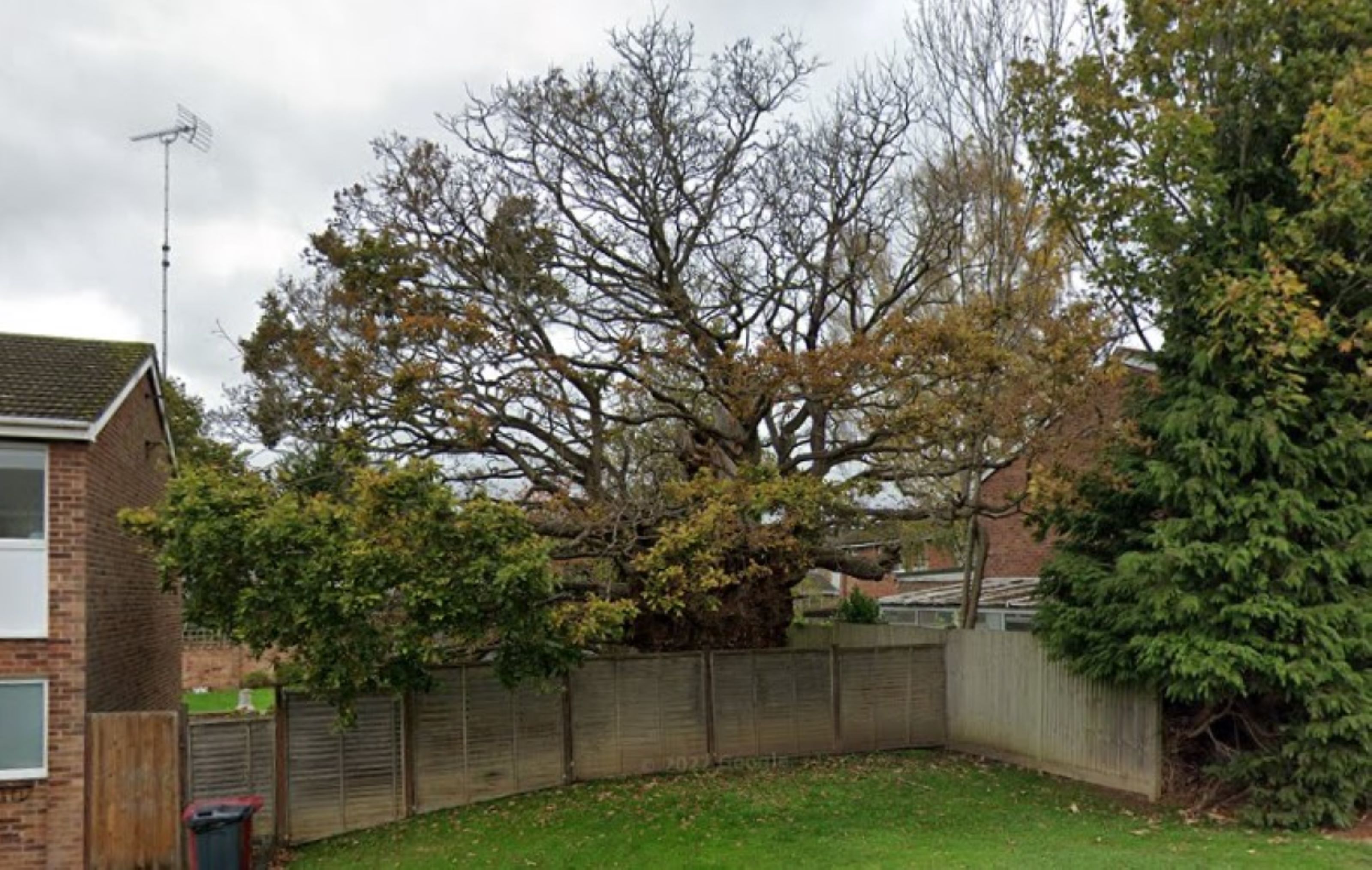The 700-year-old 'diseased' tree at the heart of new build planning battle
Local residents challenge developer's bid to replace the ancient 'King's Spy Oak' with a new three-bed home in Berkshire, triggering a planning standoff

A 700-year-old oak tree has become the centre of a planning row as developers seek to replace the historic landmark with a housing project.
The proposed plans put forth by the developers involve the removal of the ailing oak tree to make way for a new home, igniting a contentious debate regarding its preservation.
Situated in Caversham, Berkshire, this ancient oak tree, affectionately referred to as the 'King's Spy Oak', has captured the interest of local residents and nature enthusiasts alike, who are fervently urging Reading Council to reject planning permission for the development.
What do the developers want to build?
According to plans submitted to Reading Council by the developers, the tree would be removed to make way for a three-bedroom house.
The plans, which were submitted by Chair Homes on behalf of the developer, emphasised that no buildings would be demolished and the only impact would be the removal of the existing tree.
Chair Homes also argued that the oak tree has limited biodiversity value due to its species, the limited canopy, and its diseased and declining state. Although an old tree like the oak would typically hold significant ecological merit, its declining condition must be taken into account.
Moreover, in the planning application the developer have stated they would plant a minimum of two trees — one at the front and one at the back of the proposed home. The developer claims that this action would lead to a '100 per cent increase in tree count', resulting in a positive uplift in the number of trees.
Get the Homebuilding & Renovating Newsletter
Bring your dream home to life with expert advice, how to guides and design inspiration. Sign up for our newsletter and get two free tickets to a Homebuilding & Renovating Show near you.
Why is the tree known as the 'King's Spy Oak'?
The ancient tree holds historical significance and served as a vital tool for parliamentary forces during the English Civil War back in April 1643.
It was utilised as a place to spy and observe the movements of King Charles I's Royalist forces. This heritage earnt the tree the nickname the 'King's Spy Oak', coined by 'landscape detective' and 'tree hunter' Rob McBride.
The significance of the tree's historical association hasn't gone unnoticed, as it has been duly recognised by the Woodland Trust. The organisation has listed the oak in its Ancient Tree Inventory, designating it as an Ancient Tree of National Special Interest.
A Tree Preservation Order (TPO) has also been placed on the tree, aiming to safeguard its existence. A TPO is a legal order imposed by a local planning authority to protect specific trees, woodlands, or trees in conservation areas from being cut down without prior permission and formal consent.
Why is there objection to the tree being felled?
The proposed plans have met opposition from local residents and wildlife groups. Emma Bennett, one local resident, raised an objection to the proposed plans as she disputes the claims of the oak tree's decline and argues that a decaying oak tree is actually an important and increasingly rare ecosystem.
She emphasises that such trees support numerous invertebrate species and that the few remaining examples hold national significance. Bennett cites government guidelines that discourage the loss or deterioration of ancient trees unless there are exceptional reasons, which she believes do not apply in this case.
Another objector, Jennifer Leach, praises the historical, ecological, and aesthetic qualities of the ancient tree. She condemns its potential removal for a mundane private dwelling, seeing it as an act of 'vandalism', particularly at a time when environmental concerns are paramount.
The objection has also garnered support from the Reading Tree Wardens, who strongly oppose the application. They highlight the tree's TPO status, recognition in The Woodland Trust's Ancient Tree Inventory, and its designation as a Tree of National Special Interest.
The wardens emphasise the irreplaceable value of ancient trees and their contribution to biodiversity, highlighting the widespread public response as an indication of the tree's national treasure status.
The fate of the tree is still to be decided with planning permission yet to be granted for the proposed three-bedroom house and the removal of the tree.

News Editor Joseph has previously written for Today’s Media and Chambers & Partners, focusing on news for conveyancers and industry professionals. Joseph has just started his own self build project, building his own home on his family’s farm with planning permission for a timber frame, three-bedroom house in a one-acre field. The foundation work has already begun and he hopes to have the home built in the next year. Prior to this he renovated his family's home as well as doing several DIY projects, including installing a shower, building sheds, and livestock fences and shelters for the farm’s animals. Outside of homebuilding, Joseph loves rugby and has written for Rugby World, the world’s largest rugby magazine.
